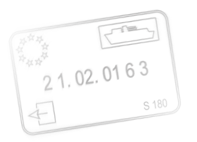Easthampton for centuries prior to settlement was the home of
the native Americans. The Pokumtakukes or Pocumtucks, estimated to have numbered approximately 1,200 to about 1600, were the primary tribe to dominate the Connecticut Valley. During the decades following the white settlement of New England beginning in 1620 numerous diseases were transmitted by the settlers to the Indians, with fatal results. By the time that Northampton was settled in 1654, the population of the Indians in the Connecticut Valley was probably less than one thousand. The Norwottucks, the local Indian group affiliated with the Pocumtucks, probably used the Connecticut River at the Oxbow and the Manhan River for transportation routes and fishing. A number of Indian trails crossed through the town, some of which were used and ultimately improved by the English settlers.
The primary north-south route went from Northampton to Westfield and was supposedly used by the original settlers of Northampton in 1654. This trail may have been the present day streets of Florence-Northampton-Main-Park-Line, which formed a rather direct route south to Westfield, then called Waranoake. Other likely trails followed along the western base of Mt. Tom along East and Hendrick streets, with east-west trails connecting these primary routes. The primary use of the land would have been for small scale farming in the alluvial soil, and fishing, particularly at the confluence of the Manhan River and at the falls near the junction of the Manhan River and Route 10. Fishing encampments along the rivers, as well as possible sites along the Mt. Tom base represented the primary probable Indian sites for the community.
The original Northampton grant included all of the town of Easthampton. For at least the first decade of that town's settlement, there was probably no utilization of the land or resources within the community now known as Easthampton. For this reason, the town meeting at Northampton gave permission to one small band of Indians to establish a palisaded village in Easthampton. Rev. Solomon Stoddard of Northampton wrote in 1815: "This fort is said to have been built on the northerly end of Fort Plain, which is now Easthampton." Fort Plain and Fort Hill Road are terms still used in probable reference to this old Indian fort, although other sources list it as having been located southwest of the junction of Route 10 and the Manhan River on a bluff, and as having been located not in Easthampton whatsoever. Circa 1665 is the supposed date of the first European who settled within the present bounds of Easthampton, in that section of the town referred to as Nashawannuck, near the 1879 home of Henry Clapp. This would put that site in the vicinity of Clapp street and Old Springfield Road. Other than these two possible areas of occupation, one by Indians, the other by a Northampton man named John Webb, no other man made buildings or structures are identified in the surviving historic records.











